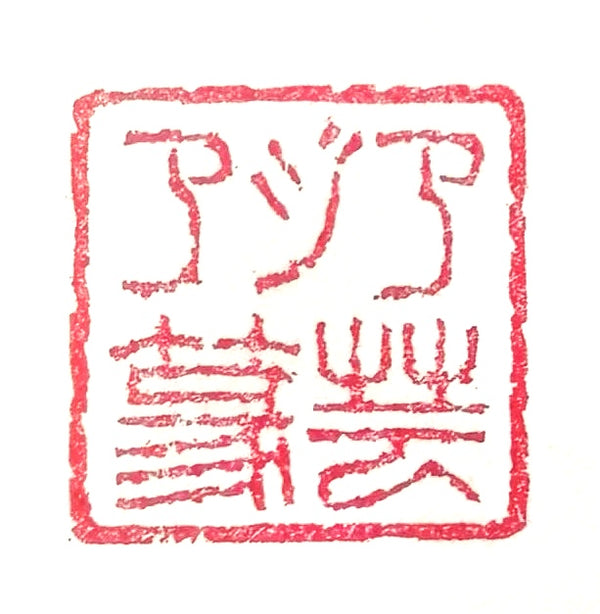Techniques for distinguishing authentic seal materials: A practical guide to avoid being fooled by counterfeits
Share
Introduction
The materials used in seal carving and calligraphy are known for their beauty, artistic value, and rarity, and can sometimes cost tens of thousands to hundreds of thousands of yen. However, due to their high value, there are also many counterfeits on the market.
It is not uncommon for beginners and those with little purchasing experience to unknowingly purchase counterfeit products.
This article will introduce basic knowledge for identifying genuine seal materials, as well as specific techniques for spotting fakes. Please use this as a reference when making the right choices for your precious collections and production materials.
Why are fake seal materials in circulation?
1. Expensive seal materials
High-quality Tianhuang stone, chicken blood stone, and Shoushan stone can be priced at hundreds of thousands to millions of yen each, making them easy targets for counterfeiting.
2. Evolution of counterfeiting technology
In recent years, advances in synthetic resins, colored stones, and artificial dyes have led to an increase in sophisticated counterfeits that are difficult to distinguish from others by appearance alone.
Common characteristics of fake seal materials
1. Unnatural colors
- Colors are "too vivid" or "too uniform"
・It has an extremely high transparency and does not resemble natural stone.
・Only certain parts are strangely red (colored like chicken blood stone)
2. There is an odor
If synthetic resins or chemical paints are used, they may have a distinctive sweet or chemical-like smell.
3. The surface feels similar to plastic
Natural stones have a cool feel depending on the temperature, but fake stones have a strange "texture" the moment you pick them up.
4. Bubbles and patterns are artificial
Be careful if you see air bubbles inside the stone or if the pattern looks too mechanical and unnatural.
Practical techniques for distinguishing authentic seal materials
1. Check by holding it up to the light
Shine natural light or a flashlight on the stone. Natural stone has a softer light path, which can reveal tiny veins or mottling within it. Synthetic materials tend to have a more linear, uniform light path.
2. Observe the surface with a magnifying glass
Use a 5x to 10x magnifying glass to check the naturalness of the minute irregularities and patterns on the surface. You should be able to see the fluctuations and unevenness that are unique to natural stone.
3. Water Drop Test (Do It Carefully)
Place a small drop of water on the surface of the seal material and observe how it spreads. Natural stones have low water absorption, so the water droplets often remain as beads. On the other hand, fake stones may quickly soak up the water.
*This method is not recommended for high-quality seal materials. If you try it, do so at your own risk!
4. Buy from a trusted retailer
The ultimate guarantee of authenticity depends on the reliability of the seller. Use a reputable seal engraving shop or an online shop with good reviews (e.g., a specialized Shopify store).
A shopping checklist to avoid counterfeits
・Be careful if the price is "abnormally lower" than the market price
・Check if the product description says "natural" or "genuine"
-Is the origin of the stone clearly stated?
- There are multiple product images and they can be enlarged
・Is there a response to inquiries and a return guarantee?
Can fakes still have value?
Even some synthetic and imitation stones offer good cost performance if used for practice or educational purposes. The problem is selling fakes as genuine products at high prices, but depending on how they are used, they can also be used to make imitation seals.
summary
Seal materials are important materials that support the art of seal carving and calligraphy, but there are many counterfeits. With the right knowledge and observation skills, you can avoid making mistakes when choosing your seal material.
There is a hidden flaw in products that are "too cheap," and you should be careful of products that "look too nice." Be sure to choose seal materials that you are satisfied with from a reliable sales source.
By encountering beautiful, genuine seal materials, your world of seal carving will deepen and your creative motivation will increase.
